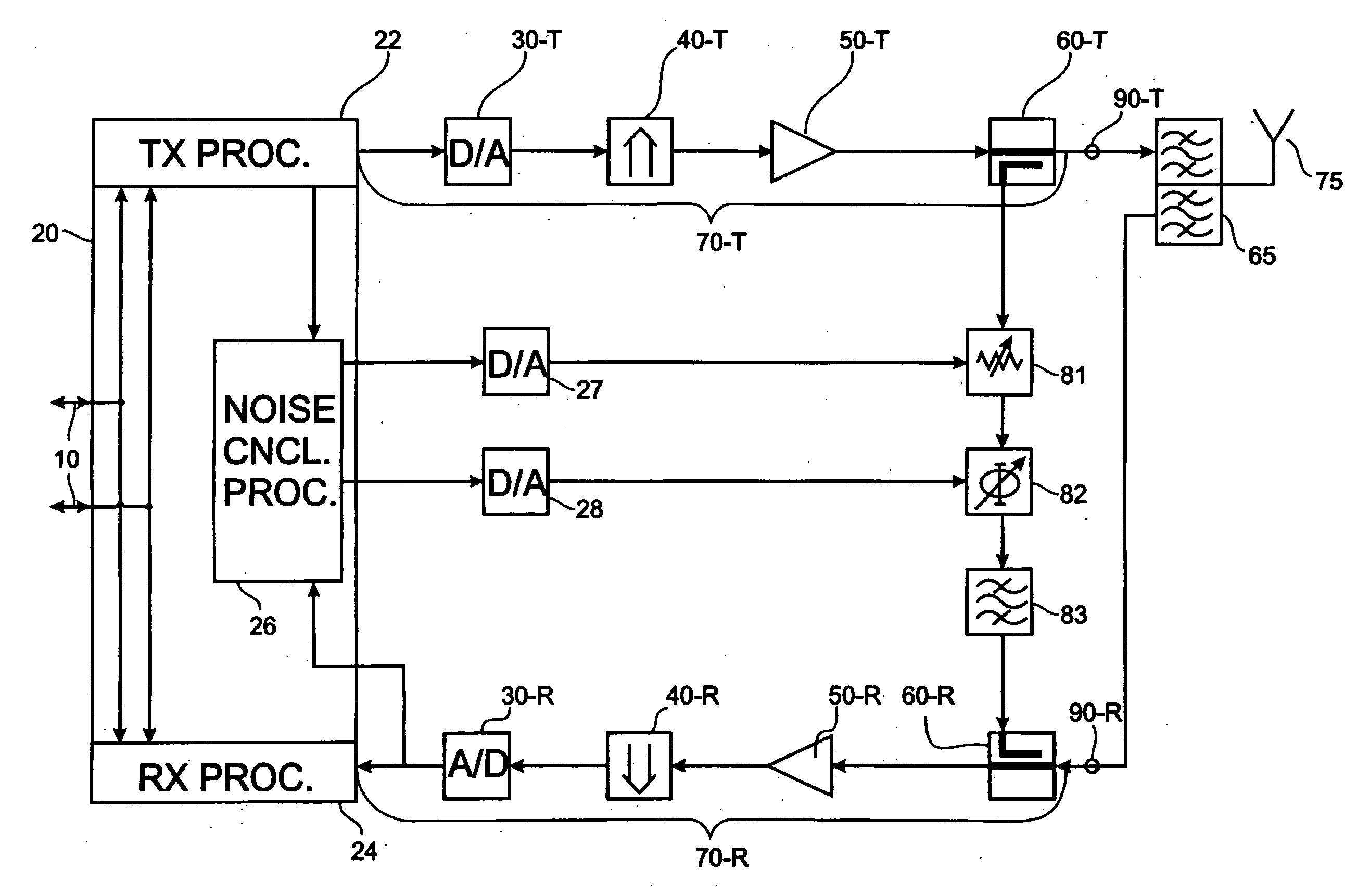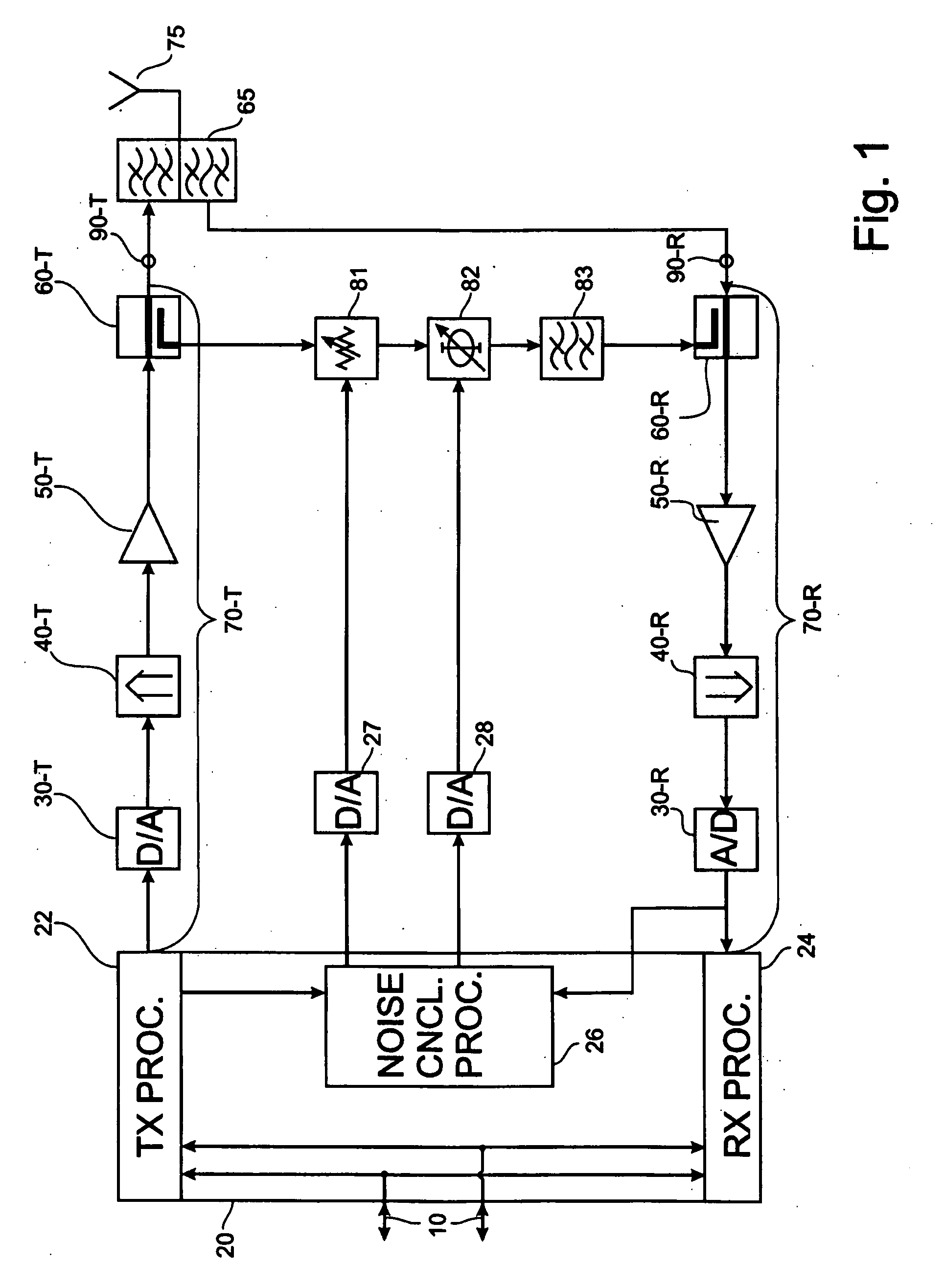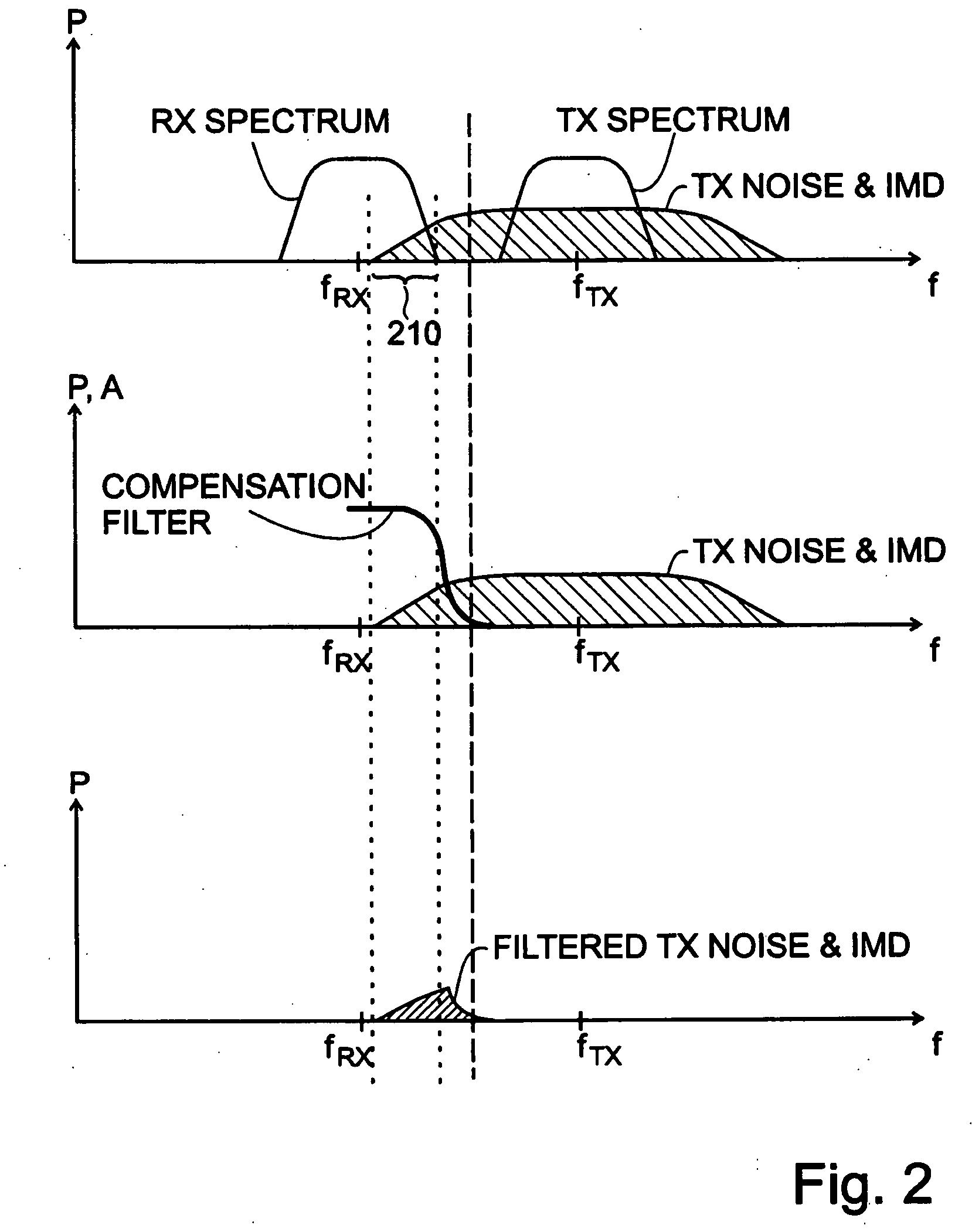Method and apparatus for interference cancellation
a technology of interference cancellation and interference signals, applied in the field of interference cancellation, can solve the problems of reducing and interference signals that fall within the receive frequency band are usually a bigger problem, so as to reduce the performance requirement of a diplexer, reduce the cost, and reduce the performance required of a diplexer.
- Summary
- Abstract
- Description
- Claims
- Application Information
AI Technical Summary
Benefits of technology
Problems solved by technology
Method used
Image
Examples
Embodiment Construction
[0036]For a complete understanding of the present invention and the advantages thereof, reference is now made to the following detailed description taken in conjunction with the Figures.
[0037]It should be appreciated that the various aspects of the invention discussed herein are merely illustrative of the specific ways to make and use the invention and do not therefore limit the scope of invention when taken into consideration with the claims and the following detailed description. It will also be appreciated that features from one embodiment of the invention may be combined with features from another embodiment of the invention.
[0038]FIG. 1 shows a schematic block diagram of a transceiver. The transceiver comprises a transmitter that is illustrated in the upper part of FIG. 1, and a receiver that is illustrated in the lower part of FIG. 1. The transceiver has an interface for exchanging input / output data 10 with components external to the transceiver.
[0039]In the transmit direction...
PUM
 Login to View More
Login to View More Abstract
Description
Claims
Application Information
 Login to View More
Login to View More - R&D
- Intellectual Property
- Life Sciences
- Materials
- Tech Scout
- Unparalleled Data Quality
- Higher Quality Content
- 60% Fewer Hallucinations
Browse by: Latest US Patents, China's latest patents, Technical Efficacy Thesaurus, Application Domain, Technology Topic, Popular Technical Reports.
© 2025 PatSnap. All rights reserved.Legal|Privacy policy|Modern Slavery Act Transparency Statement|Sitemap|About US| Contact US: help@patsnap.com



